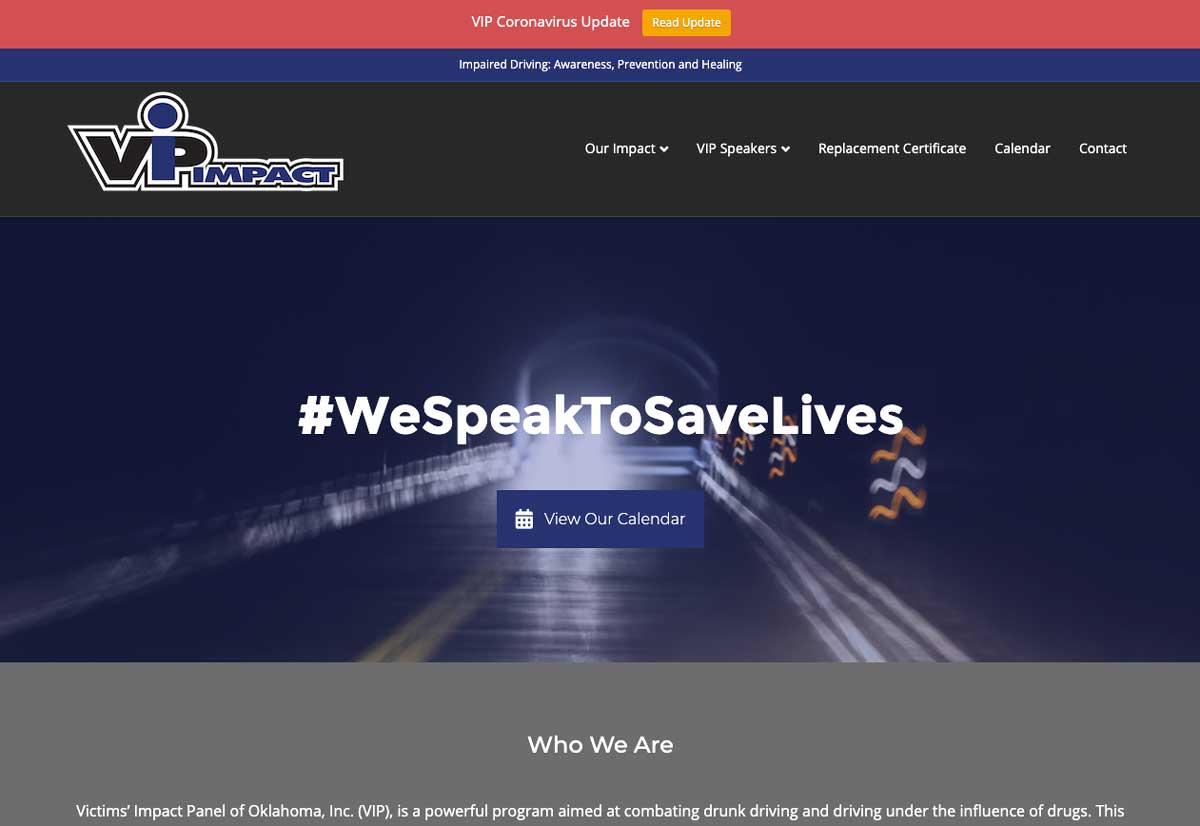As I write this, most of the United States is practicing social distancing in an effort to slow down the spread of COVID-19, also known as the coronavirus. During any worldwide crisis—and even local crises—digital channels make communication easier than ever before.
But if you haven’t developed a full-blown crisis communication plan, that can feel overwhelming!
Let’s take a look at some tools, channels, and tactics you can use. Then we’ll talk about the actual messaging for communication during a crisis, including a template you can follow.
Of course, if you’re a client of ours and need help with any of this, please feel free to reach out. The sooner the better! We’ve helped clients with alerts on their websites, crisis email blasts, and more.
Tools, channels, and tactics
In an ideal world, you’ve done work on building up your online audience long before you encounter a crisis. In reality, that’s often not the case. But it’s never too late! All of these tools, channels, and tactics are more effective the bigger and better your audience is.
Your website
Your website should be your home base online. It’s the only platform and tool you really have complete control over, budget permitting. Here are some ideas for utilizing your website during a crisis.
- Publish a blog communicating how you’re handling the crisis. We’ll get into the details of what that post can include here in a bit.
- Set up an alert bar on the top of your website linking to that blog article. For WordPress users, we’re currently recommending WP Notification Bars. Our long-time clients over at Victims’ Impact Panel of Oklahoma are one example of how you can use it.
- You can also add a chat service to your website, or even a chatbot. That will allow you to be more responsive to people who have questions. ManyChat is one option that combines the power of Facebook chat, chatbots, and can even be added to your website.
Email marketing
Email marketing can definitely be effective, but the sooner you send out an email about the crisis, the better. Of course, you want to communicate clearly and calmly, while considering your audience’s perception. But a strategic email sent out sooner is better than a strategic email sent out later.
Personally, I’ve received dozens of emails about how organizations are responding to COVID-19. While the first few were helpful, many of the emails that followed were just noise.
The two main providers to consider for email marketing are Mailchimp and Constant Contact. We prefer Mailchimp because most of our clients find it easier to use than Constant Contact and other options with more complex interfaces.
Social media
Social media can be a huge help or a huge problem during a crisis. Being proactive about posting, monitoring, and responding can help set you up for success.
Here are some ideas for your social media presence during a crisis.
- Create a post with a short overview of how you’re handling the crisis, then link to your blog post that has even more information.
- Consider pinning the post on platforms that have that feature.
- Boost the post to get it more exposure. This can especially help if you haven’t worked on building your audience yet. Even $50 or $100 can go a long way.
- If you haven’t turned on the chat option for your Facebook Page, consider doing that.
Be very careful how you respond to comments on social media, especially those that criticize how you’re handling things. A rash response or one that’s poorly thought-out can quickly go viral and do major damage to your organization.
Texting

While we’re just now getting into text marketing for our clients, it’s been around for quite a while. If you have a database of mobile numbers for your clients and customers, consider sharing some high-level information with them via text. You might even send out the link to your blog article if they want all the info.
Here are a few text marketing services to consider:
Some clients will be more responsive to email, while others will be more responsive to texting.
Messaging
Now that we’ve covered some tools, channels, and tactics, let’s dive into the actual messaging. How you say things is just as important as what you’re saying, if not more so!
Let’s take a look at some dos and don’ts, then we’ll look at a template you can follow along with an example of how to implement the template.
Dos
- Communicate clearly, calmly, and in a timely manner
- Make essential information easy for people to find
- Carefully consider your audience’s perception and be cautions of messaging tone and perceived motive
- Be useful to your audience, not just more noise
- Be positive and look to the future
Don’ts
- Don’t enter the conversation if you don’t need to, only if it’s to uplift and provide information
- Don’t contribute to the circulation of false information or hysterical social noise
- Don’t make polarizing comments or use offensive humor
- Don’t use negative emotional language
- Don’t make promises you can’t deliver
- Don’t be overly promotional or spammy
Crisis media statement example
In The Book of Crisis Management Strategies & Tactics, vol. 9, they recommend sticking to the 5Cs:
- Certainty
- Compassion
- Concern
- Collaboration
- Control
Here’s what an example statement might look like:
You’ve likely already received numerous emails and seen how many other organizations are handling COVID-19. Without a doubt, it’s having a huge impact on our country, our economy, and the world as a whole.
The team at T&S Online Marketing is here to support you and your organization during this time! We’ve already been helping clients post on social media, update their websites, send out emails, and more.
Our goal has always been to help support our clients, and now is no different. We’re communicating with clients that have urgent information they need to get out there and continuing to work with them on their normal needs as well.
We know the business community will band together during this difficult time to help everyone get through it!
Whether you’re already a client of ours or would like our help, please reach out if you need marketing and communication assistance. You can call us at 405-285-0348 or email our owner at tim@tandsgo.com.
And thanks to everyone that’s helping others get through this difficult time. We can pull through it if we all stick together. Here’s looking forward to the future!
Here’s a breakdown of each element in that example:
- Certainty: The first paragraph covers statements about the situation that we’re certain about.
- Compassion: The next paragraph shows our empathy and how we’re helping our clients who are affected.
- Concern: The third paragraph describes how we are sticking to our values during this crisis.
- Collaboration: The fourth paragraph is a brief statement about cooperative efforts to get through the crisis.
- Control: The final two paragraphs talks about the control people do have whose businesses are affected and the action they can take if they’d like our help. It also thanks people who are already doing so much to help.
See how that worked? Now you can create your own crisis media statement to post on your blog, send out via email, link to in social media, and communicate via text.
Again, if you’re a client of ours, please reach out if you need any help with any piece of this. And if you’re not a clients, we would be happy to chat and see if we might be the right fit for you!




